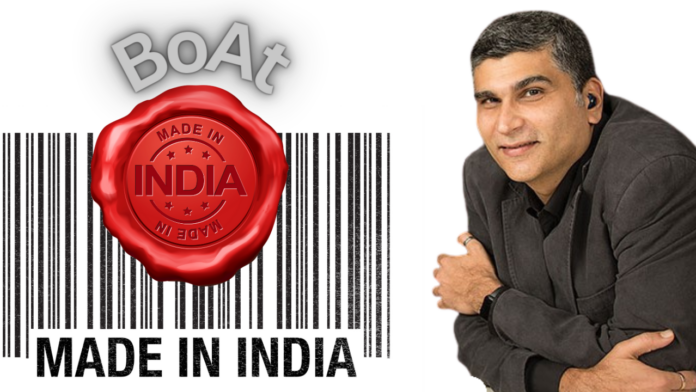BoAt, a prominent player in India’s market for hearables and wearables, is enhancing its domestic manufacturing capabilities to transform the Indian electronics industry. Sameer Mehta, Co-founder and CEO of boAt, discussed the company’s manufacturing strategies and alignment with the ‘Make in India’ initiative in a recent conversation with The Mobile Indian.
Embracing Local Production
Underlining boAt’s commitment to bolstering India’s manufacturing ecosystem, Mehta revealed, “We are proud to manufacture 70% of our audio wearables in India through our strategic joint venture with Dixon Technologies, forming Califonix Tech and Manufacturing.”
He added, “This move is not only a step towards self-reliance but also a testament to boAt’s investment in Indian design and engineering prowess. The boAt Labs R&D center spearheads innovation tailored to the Indian consumer.”
Driving Economic Growth
The initiative goes beyond enhancing supply chain resilience; it’s about nurturing a robust ecosystem that propels economic development and job creation. “Our focus is not merely on assembly but on fostering a comprehensive ecosystem for the domestic electronics industry,” Mehta emphasized, showcasing the brand’s broader vision for India’s technological advancement.
Market Dynamics
Highlighting the expansive growth, Mehta pointed to recent data: “The India wearable market grew 34% in 2023, with a record 134.2 million units shipped.” he further added, ” A surge of interest in smart rings can be seen in 3Q23, alongside the release of new smartwatch and earwear models.”
Decision Drivers
The pivot towards Indian manufacturing was influenced by several factors, including the global supply chain disruptions during the COVID-19 pandemic and the growing sentiment for reducing dependency on imports, particularly from China. The Indian government’s ‘Make in India’ initiative, offering incentives for local production, further motivated boAt to deepen its manufacturing roots in India.
Governmental Influence
Mehta praised the positive impact of government policies, such as the ‘Make in India’ and Phased Manufacturing Programme (PMP), which provide financial incentives, making domestic production more competitive. Initiatives like Skill India and investments in infrastructure have also played crucial roles in enhancing the efficiency and viability of manufacturing operations within the country.
Policy Recommendations
Mehta suggests introducing Production Linked Incentives (PLI) or similar schemes tailored for them to further boost the hearable and wearable sectors. This could be a great move to strengthen domestic manufacturing.
He said, “These incentives could cover manufacturing disabilities and range from 8-10%. By providing incentives for components and subassemblies, the scheme could enhance economies of scale and improve domestic manufacturing capabilities.”
The Road Ahead
Looking forward, Mehta envisions India has the potential to become a crucial manufacturing hub for wearables and hearables. He said, ” With a vast consumer market and an expanding network of technological and manufacturing partnerships, supported by the government’s initiatives, India is poised to influence the global wearable technology landscape significantly.”
According to projections, shipments are expected to reach 162.2 million units by 2024. To capitalize on this opportunity and strengthen India’s position as a leading player in the wearable technology sector, he said, ” sustained investments in domestic manufacturing, research and development, and skill enhancement will be crucial.”
BoAt’s strategic shift towards domestic manufacturing aligns with national initiatives. It sets a precedent for Indian brands to innovate and compete globally, marking a significant step towards India’s emergence as a leading player in the global electronics manufacturing arena.


